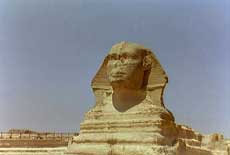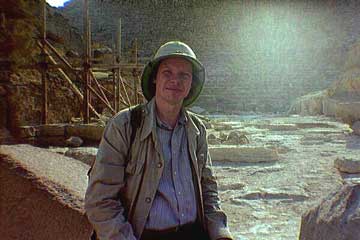|
Books about the Great
Sphinx & Pyramids
“Pyramid Quest: Secrets of the Great Pyramid and the Dawn of Civilization”
by
  Dr Robert M. Schoch Dr Robert M. Schoch
&
Robert Aquinas Mcnally
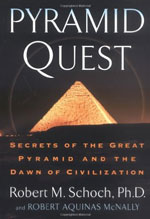
EU English Edition
“How is it that the Great Pyramid exercises such a gripping hold on the human psyche adding cryptic grace and framing myriad claims of New Age “pyramid power”? In “Pyramid Quest”, Robert M. Schoch and Robert Aquinas McNally use the rigorous intellectual analysis of scientific inquiry to investigate what we know about the Great Pyramid and develop a stunning hypothesis: this ancient monument is the strongest proof yet, that civilisation began thousands of years earlier than is generally thought, extending far back into a little-known time.
In tracing that story, we come to understand not only the Great Pyramid but also our own origins as civilised beings.”
“Voices of the Rocks: A Scientist Looks at Catastrophes and Ancient Civilizations”
by
 Dr Robert M. Schoch Dr Robert M. Schoch
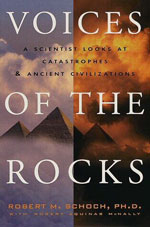
“The great 19th-century battle between catastrophists and uniformitarians seemed to end with the notion of global cataclysms being dismissed as a back door to the supernatural.
But the catastrophist theory has gradually become more and more plausible, so that now, less than a hundred years later, it is widely believed that mass extinctions are linked to meteor strikes.”
Get This Book From:
Amazon.com
Amazon.co.uk
“Voyages of the
Pyramid Builders”
by

Dr Robert M. Schoch

“Is it a mere coincidence that pyramids are found across our globe? Did cultures ranging across vast spaces in geography and time, such as the ancient Egyptians; early Buddhists; the Maya, Inca, Toltec, and Aztec civilizations of the Americas; the Celts of the British Isles; and even the Mississippi Indians of pre-Columbian Illinois, simply dream the same dreams and envision the same structures?
In this dramatic and meticulously reasoned book, Schoch, like anthropologist Thor Heyerdahl in his classic Kon-Tiki, argues that ancient cultures traveled great distances by sea.”
Get This Book From:
Amazon.com
Amazon.co.uk
|
|
“Lawton and Ogilvie-Herald proceed (starting on page 315) to discuss a number of “types of weathering” that they claim are taking place in the Sphinx enclosure, but it quickly becomes evident that they have little understanding of the topic. They discuss what they term “precipitation weathering” (caused by rainfall, as I have elucidated in my various works), “wind-sand weathering” (also based on my work), and “chemical weathering” (apparently based primarily on the papers of Gauri and Harrell). They divide the latter category into “capillary weathering” (apparently based on ideas from both Gauri and Harrell), “wet-sand weathering” (based primarily on the ideas of Harrell), and “atmospheric weathering” (apparently based on the work of both Gauri and Harrell).
Rather than addressing Gauri and Harrell indirectly via a discussion of Lawton and Ogilvie-Herald’s reinterpretation of their ideas, here I will briefly discuss Gauri and Harrell directly.
K. Lal Gauri has maintained that the weathering and erosion of the Sphinx and walls of the Sphinx enclosure are the result of the various effects of chemical weathering, particularly something known as “Exfoliation” or the flaking away of the surface of the limestone. According to Gauri, dew that forms at night on the surface of the rock dissolves soluble salts found on the surface and then the liquid solution is drawn into tiny pores in the rock by capillary action. During the daytime the solution evaporates and salt crystals precipitate in the pores. As the crystals form they pressure which causes the surface of the limestone to flake away. This, in fact, is an important weathering factor that is currently taking place on the Giza Plateau.
However, it alone cannot account for all of the weathering features seen in the Sphinx enclosure, and more importantly it alone cannot account for the specific distribution of weathering features actually found in the Sphinx enclosure (such as the more intense weathering, erosion, and degradation seen in the western end of the Sphinx enclosure, as discussed further below).
The weathering processes proposed by Gauri will also have their maximum effect under extreme arid conditions with the Sphinx exposed to the elements. When buried under a layer of sand, the Sphinx and Sphinx enclosure are on the whole protected from these effects. Also, interestingly, the flaking away of the rock as proposed by Gauri is (or at least should be) operating on all of the limestone surfaces of the Giza Plateau, yet somehow virtually no other surfaces show the same type of weathering and erosional profile as seen in the Sphinx enclosure.
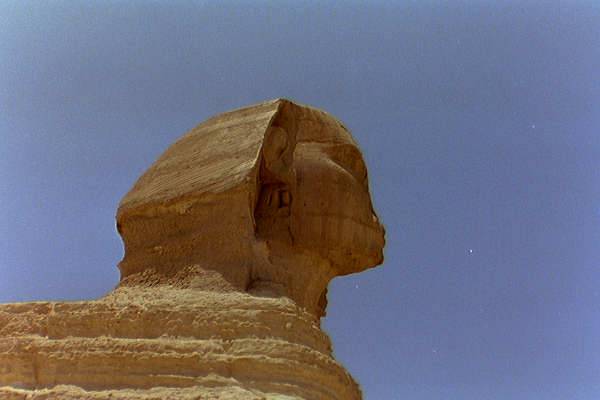
While I do not deny that salt crystal growth is indeed damaging the Sphinx and other structures during the present day, this mechanism does not explain the ancient degradation patterns observed on the Sphinx’s body and in the Sphinx enclosure area but virtually nowhere else on the Giza Plateau.
Gauri has also suggested that the Sphinx and Sphinx enclosure have been, and are, subject to extremely rapid weathering, and he has pointed out that there has been significant deterioration of the Sphinx since the beginning of the twentieth century.
As I have pointed out previously, however, and in all fairness Lawton and Ogilvie-Herald mention this in their book, one cannot extrapolate present modern weathering rates back into the past when it comes to the Giza Plateau. Industrialization, air pollution, acid rain, rising water tables due to encroaching settlement, tourism, automobile and bus traffic, and so forth, may (I believe are) affecting the structures on the Giza Plateau in a detrimental manner. Modern weathering and erosional processes are not the same as the ancient processes in every case.
As I have discussed previously in a letter to the magazine, “Archaeology”, (January – February 1995 issue, one of many references that Lawton and Ogilvie-Herald fail to cite), much of the Hawass-Lehner argument, which is in large part based on the work of Gauri, for a younger Sphinx hinges on the assertion that its present style and rate of weathering and erosion is representative of its past weathering. Hawass and Lehner have stated that “ancient and modern weathering on the Sphinx are, for the most part, the same ball game.”
They discuss how soft the limestone is in some places (“you can crumble the stone with your fingertips”) and the flaking of the stone to produce “giant potato chips” without realizing that these surficial weathering features are primarily due to modern assaults (pollution, acid deposition, salt deposited by rising water tables from the adjacent village and the damming of the Nile, and so forth) that have not been operating over the last five millennia.
The work of K. Lal Gauri has documented the modern deterioration, as opposed to ancient weathering, of the Sphinx. In one publication Gauri illustrates, using comparative photographs from ca. 1925-26 and ca. 1980-81, how amazingly rapid this deterioration has been over the span of just a few decades (K. L. Gauri and G. C. Holdren, 1981, American Research Center in Egypt Newsletter, No. 114). This contradicts the Hawass-Lehner assertion that the ancient and modern weathering are the same. Arguably the Sphinx has suffered more during the last century than it did during the previous 5,000 years.”
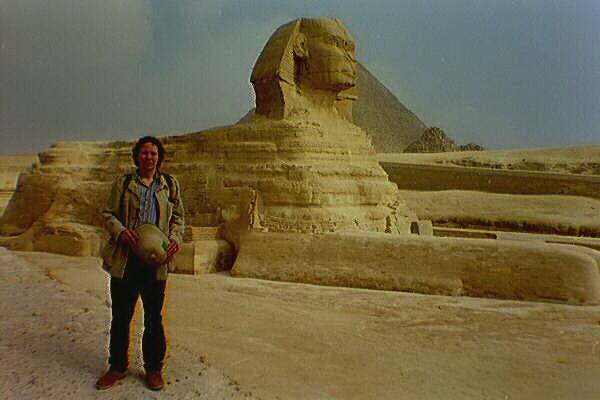
Dr Robert M. Schoch’s response to criticisms by Ian Lawton & Chris Ogilvie-Herald in their book
“Giza: The Truth” continues on:
Page Four
|
|
“The Pyramids and Temples of Gizeh”
by

W. M. Flinders Petrie
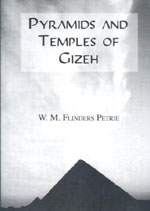
“Based on the author’s work in Egypt in the 1880s, this unusual volume addresses one of history’s greatest puzzles — how were the pyramids of Gizeh built? Before Petrie undertook this study, the Great Pyramid was a byword for paradox – something that was generally familiar, yet not accurately known. No measurements or detailed examination had been performed. Petrie set out to apply mathematical methods to the study of the pyramids and surrounding temples, with the objective of understanding the methods and abilities of the ancient workers.
The result, presented in this volume, is a complete set of measurements of the pyramids, both inside and outside. These provide the foundation for the rest of the book, which deals with the architectural ideas of the pyramid builders, the mechanical methods they used, and a comparison of previous theories with the facts that Petrie had newly established.”
Get This Book From:
Amazon.com
Amazon.co.uk
“Based on the author’s work in Egypt in the 1880s, this unusual volume addresses one of history’s greatest puzzles — how were the pyramids of Gizeh built? Before Petrie undertook this study, the Great Pyramid was a byword for paradox – something that was generally familiar, yet not accurately known. No measurements or detailed examination had been performed. Petrie set out to apply mathematical methods to the study of the pyramids and surrounding temples, with the objective of understanding the methods and abilities of the ancient workers.
The result, presented in this volume, is a complete set of measurements of the pyramids, both inside and outside. These provide the foundation for the rest of the book, which deals with the architectural ideas of the pyramid builders, the mechanical methods they used, and a comparison of previous theories with the facts that Petrie had newly established.”
“The Complete Pyramids:
Solving the Ancient
Mysteries”
by
 
Mark Lehner
&
Richard H. Wilkinson
“For centuries the pyramids have inspired passionate theories about their origins, purpose and method of construction. In this full work on the major pyramids of Ancient Egypt, the author surveys the history, building and use of the pyramids. He examines both the practicalities and logostics of their construction and their conceptual aspects – their cosmology and iconography and their intriguing texts.”
Get This Book From:
Amazon.com
Amazon.co.uk
|

